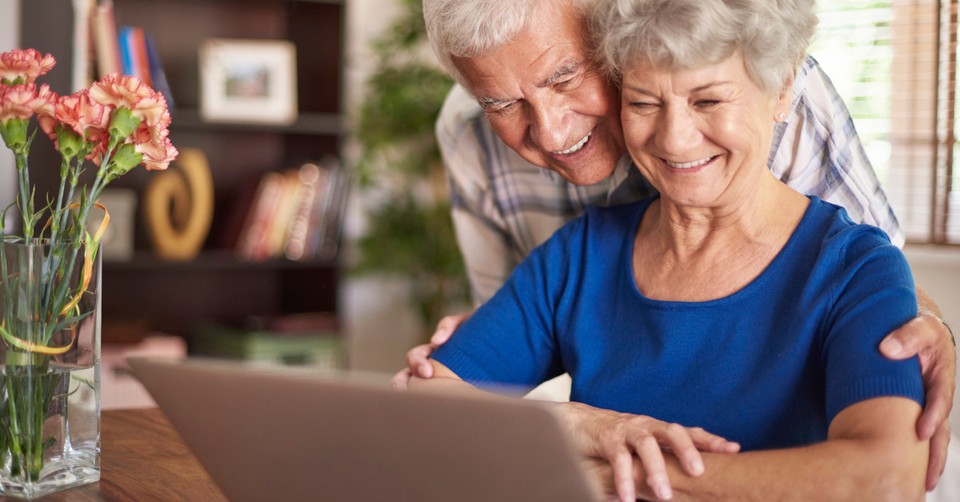How Technology Helps You Care for Aging Parents You Can’t Visit during COVID-19

How we interact with others and respond to the social distancing realities have affected nearly every part of our lives the past couple of months since the COVID-19 pandemic hit with full force.
In most instances, we have been able to adapt fairly well (albeit maybe not optimally) by using technology to homeschool, order meals for ourselves or others, or attend virtual church services.
But one area where technology has yet to be embraced and/or been able to fill the gap is providing support and care to our aging loved ones.
That said, I believe this present coronavirus situation is a golden opportunity to leverage technology to not only care well for our aging parents but to learn how to deliver great care and support to our loved ones in new and better ways.
Physical Presence Is Still a Critical Need
There are some logical reasons why technology has not become an integral part of how we support and care for our aging loved ones. Fortunately, that does not mean technology can’t still play a helpful, healing role.
There will likely always be a need for the physical presence and assistance of another person to provide care to someone in advanced years who needs daily living assistance like bathing, dressing, or other physical activities.
This requires a human touch that is not going to be replaced by technology into the foreseeable future.
However, the majority of support most of our elderly loved ones need to live and thrive is not hands-on assistance with activities of daily living.
Meeting Emotional and Spiritual Needs Increases Quality of Life
I have found in my more than 20 years in senior care that when a focus is placed on their emotional and spiritual needs, seniors are more likely to achieve their highest quality of life.
I have found many families address the needs of their elderly loved ones in reverse order of therapeutic value: they focus on the physical care requirements only, or delay or limit any kind of support until a physical need is identified.
But I have seen hundreds of times that when the emotional and spiritual needs are properly supported, many of the physical care requirements don’t manifest as quickly. That means a higher quality of life for a more extended time.
Valuable Tools for Offering Emotional and Spiritual Support
Technology offers us many opportunities to do this today that we did not enjoy even just a few years ago.
The problem is the multitude of proven and emerging technologies have yet to be widely-accepted. This can be due to:
- insurance and government reimbursement models
- families themselves having little knowledge of the solutions
- the belief that seniors can’t use the technology
- seniors themselves being resistant to accepting support and services via new and different technology
One of the primary reasons for the resistance from seniors is the misperception that it is the dreaded “Help, I’ve fallen and I can’t get up” button.
That is old technology that is very reactive. Today’s senior care technology is focused on being proactive to minimize or eliminate falls and hospitalizations and improve independence and quality of life.

Easy Technology Helps the Active Aging Market Connect and Thrive
Many of the new breakthroughs are focusing on the active aging market as it is expected to nearly triple in three years. These technologies allow for seniors to live with the freedom and independence they desire while providing their loved ones with peace of mind that their parent or grandparent is safe and doing well.
Social isolation was already the number-one health risk in this country prior to stay-at-home orders and social distancing. It has shown to be equivalent to smoking an epidemic equivalent to smoking 10 to 15 cigarettes per day. With people over the age of 85 facing one of the highest suicide rates, this is an important area to address with your aging loved one, with ways that go beyond a telephone call.
There are senior-friendly technologies which are out-of-the-box ready to go for your elderly loved one that enable you to have video calls and share pictures and videos without requiring any set-up or in-home visitation.
I have used one particular product for my parents, who are 70 and 80, and for my clients in my home care business for three years to deepen the contact we have with them.
Imagine a grandparent or great-grandparent being able to easily read a story to their grandchild as they go to bed at night while watching their expressions and to say prayers with them.
These moments lift the human spirit and provide emotional and spiritual wellbeing in ways not available five years ago.
Using Wristwatch Technology to Watch Over their Wellbeing
Another way to provide peace of mind to you and monitor your loved one’s emotional well-being is through a technology similar to your Fitbit or iWatch.
Imagine if you could know that your mom was starting to show signs of depression, which increases not only her risk of falling, but heart disease and cognitive decline.
That technology exists today.
All your loved does is wear an iWatch-like device that has an easy-to-change battery and some receivers placed in the home. You download an app on your phone to receive any alerts and, voila, you can virtually check in with your mom to ensure all is okay in a very unobtrusive way. And you can be confident you’re receiving scientifically-proven feedback. You can search for these senior-friendly, smart wearable solutions online.
This type of technology allows you and your loved ones peace of mind beyond physical safety. Because it frees you both to enjoy video calls for deep meaningful conversations instead of just being their health-care inquisitor.
True Story: Practical Application through Virtual Pickleball
I heard a wonderful story this week from a daughter who was using this predictive technology. Her father was active playing pickleball several times a week and socializing with friends. That all ended several weeks ago.
Over the past several weeks, the daughter has noticed her dad’s depression indicators increasing. He is moving less and sleeping more, but the quality of the sleep is not as good.
When she spoke with him on the phone, he would say he was doing well. But seeing that her dad’s emotional health was likely declining, she organized a virtual game night with his Pickleball friends. It was a great assist in lifting his spirit and moving the indicators into a positive direction to limit his risk of falls and other potential health effects.

Telehealth Technology Here to Stay
Speaking of health, I would be remiss if I did not mention the wonders of telehealth. I am hopeful the pandemic will elevate telehealth to finally becoming widely accepted.
I have been fortunate to be able to work with and view firsthand some of the leading senior technology companies in our country. The telehealth centers I have toured are full of top-notch physicians providing high-quality services.
Benefits of using telehealth visits for your loved ones include:
- limiting their exposure to sick people with COVID-19 or other contagious illness
- visiting with their physician in the comfort of their own homes
- saving time previously spent driving to and from appointments and waiting in doctor’s offices
- minimizing the cost of care in the long term by understanding and applying new technologies now
How Do I Get Started?
Many of you are probably reading this and thinking, “Well, this is all great information. But, where do I begin?”
As I write in my book, Is It Time? 3 Steps to a Successful Journey with Aging Loved Ones, this is a process. It begins with planning. This means understanding the options, costs, and personal commitments of bringing in new technologies.
After your research and planning, have open communication with your loved one and all the family members who are involved with supporting him or her. This is likely the step where you are going to have the most difficulty.
You can ease this by focusing on your shared goals: supporting your loved one to remain as independent as possible, and to maintain the highest quality of life possible.
The final step will be accepting supportive solutions. I am sure many of you are thinking that it will be your aging loved one that will be the biggest resistor. My experience is the opposite.
I often find it is the family members who are the least accepting of new ways of caring for their loved ones.
Remember, God Is in Control
God has a wonderful way of nudging us forward through some of our greatest difficulties in life. There are gifts to be found in every seeming difficulty. The willingness for seniors and families to accept and engage with technology may be one of many positive results from the nudges from this pandemic.
I believe we can emerge from this crisis with a greater focus on supporting our aging loved ones in new ways that increase not only their quality of life but also ours.
Photo Credit: ©GettyImages/gpointstudio

Originally published May 14, 2020.







